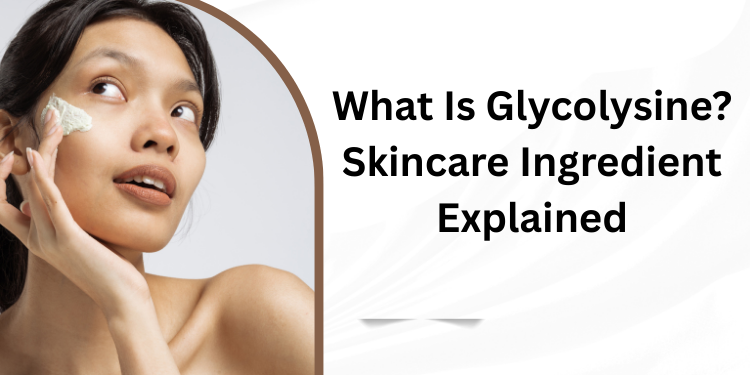The beauty and skincare world is full of buzzwords, from hyaluronic acid to niacinamide. Every few months, a new ingredient trends on TikTok, YouTube, or Instagram, promising glowing skin and lasting results.
But for many skincare lovers, this can be overwhelming. With so many terms floating around, how do you separate what’s real from what’s just hype?
One name that’s starting to appear in ingredient lists and discussions is glycolysine. Unlike well-known ingredients, glycolysine isn’t yet a household name, which makes it easy to misunderstand, ignore, or even confuse it with other terms like “glycolic acid.”
For anyone serious about skincare, effective products, and understanding ingredients is key. You don’t just want to put anything on your face; you want to know what it does, why it’s there, and if it’s safe.
That’s where this article comes in. We’ll break down glycolysine in simple terms, explain its role, benefits, and limitations, and help you decide if it’s an ingredient to look out for in your skincare journey.
The Pain Point: Confusion and Distrust in Skincare Ingredients
Before we get into definitions, let’s acknowledge a common frustration: skincare jargon is confusing.
- You read a product label and see a list of chemical names you don’t recognize.
- Marketing terms often make bold promises but don’t explain the science.
- With counterfeit and low-quality products circulating, especially online, you wonder if the ingredients are safe or even real.
This lack of transparency creates a big pain point for skincare users: not knowing which ingredients to trust or how they affect your skin.
Understanding glycolysis is one step towards making more informed choices.
What Is Glycolysine?
Glycolysine is a compound formed when glycolic acid (a type of alpha hydroxy acid, AHA) reacts with lysine (an amino acid essential for skin and body health).
- Glycolic Acid: Famous in skincare for exfoliation. Removes dead skin cells, brightens dull skin, and smooths texture.
- Lysine: An amino acid that supports collagen production and helps maintain skin elasticity.
When combined, glycolic acid and lysine create glycolysine, a compound that may appear in formulations for both skincare and nutritional/medical products. In skin, glycolysine is often explored for:
- Skin renewal
- Elasticity and firmness
- Reducing visible signs of glycation (a process that contributes to ageing).
Glycolysine and Skin Ageing: Why It Matters
To understand glycolysine’s importance, let’s look at the role of glycation in skin ageing.
- Glycation happens when sugar molecules in your body bind to proteins like collagen and elastin.
- This process creates “Advanced Glycation End Products” (AGEs), which make collagen stiffer, less flexible, and prone to breaking down.
- The result? Wrinkles, sagging, and dull skin.
Here’s where glycolysine comes in. Research suggests that lysine-based compounds may counteract glycation, slow down or reduce its impact on the skin. By pairing lysine with glycolic acid, glycolysine might combine exfoliating benefits with anti-aging support.
Benefits of Glycolysine in Skincare
While research is still evolving, here are potential benefits associated with glycolysine:
- Anti-Aging Support
- Reduces glycation damage.
- Maintains collagen elasticity.
- Slows down wrinkle formation.
- Skin Renewal
- The glycolic acid component exfoliates.
- Brightens skin surface.
- Hydration & Elasticity
- Amino acids like lysine are involved in water retention and skin flexibility.
- It can complement hydrating routines for plumper skin.
- Synergistic Effect
- Instead of using glycolic acid alone, combining it with lysine may create a gentler but effective compound for long-term skin health.
Is Glycolysine Safe?
One of the biggest concerns for skincare enthusiasts is safety.
- Glycolysine isn’t as widely studied as glycolic acid or niacinamide.
- Early research points towards potential benefits, especially against glycation.
- In skincare formulations, it’s generally considered safe when used at approved concentrations.
Important Note: Always patch test new products. Since glycolysine is related to glycolic acid, people with very sensitive skin may experience mild irritation.
How Glycolysine Differs From Other Ingredients
You might be confusing glycolysine with:
- Glycolic Acid: A pure exfoliant.
- Lysine: An amino acid found in supplements.
- Glycolysine: A hybrid compound combining both for targeted skin benefits.
Think of it this way: glycolysine isn’t just another exfoliant or amino acid; it’s a fusion ingredient tackling ageing at a deeper biochemical level.
Who Should Use Products With Glycolysine?
- Ageing Concerns: If you’re seeing early wrinkles, sagging, or dull skin, glycolysine may support anti, ageing routines.
- Preventive Skincare Users: Younger users who want to stay ahead of visible ageing may find it helpful as a preventive measure.
- Skincare Enthusiasts: If you love trying new ingredients and staying ahead of the curve, glycolysine is worth exploring.
- Dull or Uneven Skin: Its exfoliating component can help brighten skin.
How to Use Glycolysine in a Routine
If you find glycolysine in a product:
- Pair with sunscreen: Like other exfoliants, it may increase sun sensitivity.
- Don’t over-layer acids: Avoid combining with strong exfoliants (e.g., high percentage glycolic or salicylic acid).
- Complement with hydration: Use serums or moisturizers with hyaluronic acid or ceramides to balance the skin barrier.
Why This Matters
Consumers today are tired of buying products with mysterious ingredients they don’t understand. By knowing about glycolysine, you:
- Protect yourself from misinformation.
- Make informed buying decisions.
- Prioritize safety over hype.
Final Thoughts: Should You Care About Glycolysine?
Glycolysine may not be the next hyaluronic acid or retinol, but it’s an interesting compound at the intersection of exfoliation and anti-aging science.
Combines the exfoliating power of glycolic acid and the collagen-supporting properties of lysine.
1: Targets one of the root causes of ageing: glycation.
2: More research to come, but for now it’s an ingredient to watch.
For the beauty enthusiast who wants to be ahead of the curve, and for the conscious buyer who wants transparency, glycolysine is worth paying attention to.
At Deoset, where authenticity matters, knowing what glycolysine is helps you buy with confidence; your skin is in good hands.

